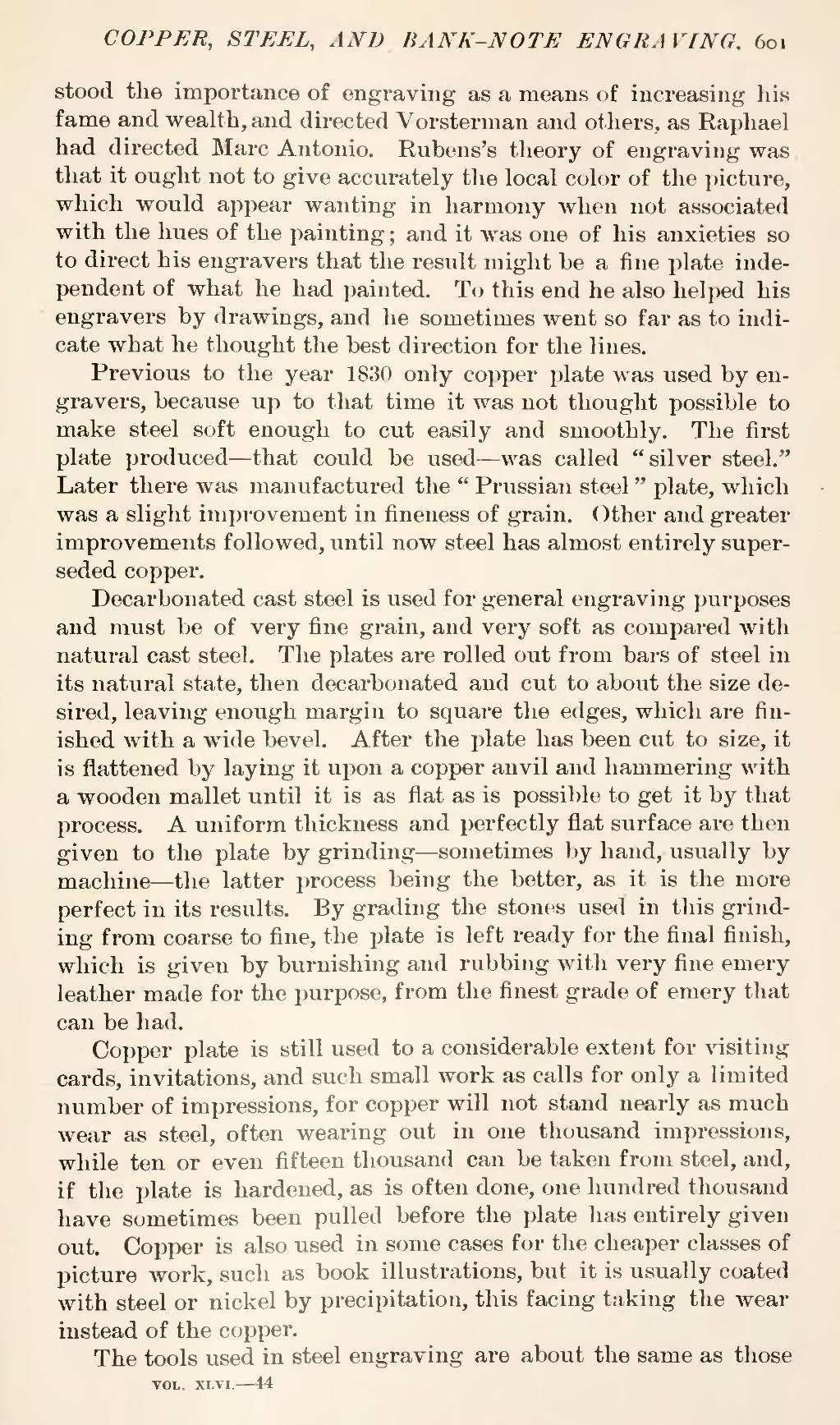stood the importance of engraving as a means of increasing his fame and wealth, and directed Vorsterman and others, as Raphael had directed Marc Antonio. Rubens's theory of engraving was that it ought not to give accurately the local color of the picture, which would appear wanting in harmony when not associated with the hues of the painting; and it was one of his anxieties so to direct his engravers that the result might be a fine plate independent of what he had painted. To this end he also helped his engravers by drawings, and he sometimes went so far as to indicate what he thought the best direction for the lines.
Previous to the year 1830 only copper plate was used by engravers, because up to that time it was not thought possible to make steel soft enough to cut easily and smoothly. The first plate produced—that could be used—was called "silver steel." Later there was manufactured the "Prussian steel" plate, which was a slight improvement in fineness of grain. Other and greater improvements followed, until now steel has almost entirely superseded copper.
Decarbonated cast steel is used for general engraving purposes and must be of very fine grain, and very soft as compared with natural cast steel. The plates are rolled out from bars of steel in its natural state, then decarbonated and cut to about the size desired, leaving enough margin to square the edges, which are finished with a wide bevel. After the plate has been cut to size, it is flattened by laying it upon a copper anvil and hammering with a wooden mallet until it is as flat as is possible to get it by that process. A uniform thickness and perfectly flat surface are then given to the plate by grinding—sometimes by hand, usually by machine—the latter process being the better, as it is the more perfect in its results. By grading the stones used in this grinding from coarse to fine, the plate is left ready for the final finish, which is given by burnishing and rubbing with very fine emery leather made for the purpose, from the finest grade of emery that can be had.
Copper plate is still used to a considerable extent for visiting cards, invitations, and such small work as calls for only a limited number of impressions, for copper will not stand nearly as much wear as steel, often wearing out in one thousand impressions, while ten or even fifteen thousand can be taken from steel, and, if the plate is hardened, as is often done, one hundred thousand have sometimes been pulled before the plate has entirely given out. Copper is also used in some cases for the cheaper classes of picture work, such as book illustrations, but it is usually coated with steel or nickel by precipitation, this facing taking the wear instead of the copper.
The tools used in steel engraving are about the same as those
